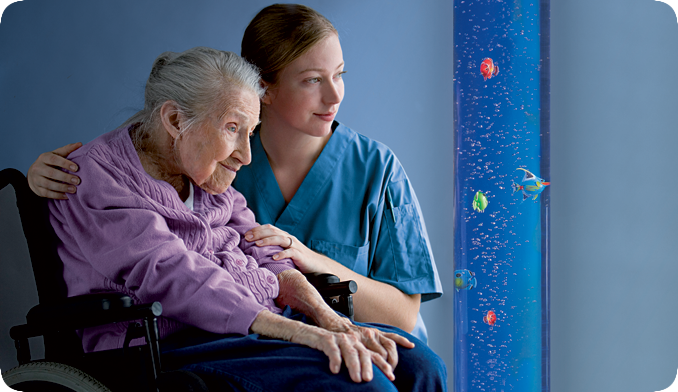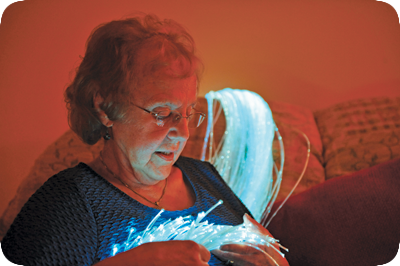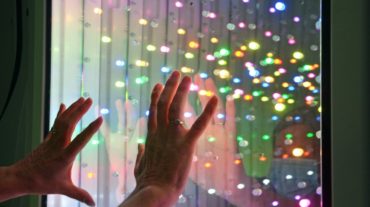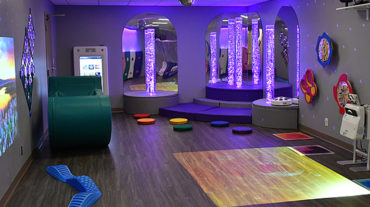Snoezelen for the Elderly
 The term ‘dementia’ describes progressive disorders affecting the brain such as Alzheimer’s disease, vascular dementia and dementia with Lewy bodies. These conditions present problems with thinking, mood, behavior, and the ability to take part in everyday activity and leisure.
The term ‘dementia’ describes progressive disorders affecting the brain such as Alzheimer’s disease, vascular dementia and dementia with Lewy bodies. These conditions present problems with thinking, mood, behavior, and the ability to take part in everyday activity and leisure.
If no suitable activities are provided and people living with dementia have nothing to do, they might become increasingly isolated, frustrated, bored and unhappy.

However, choosing the most suitable type of activity for people in the mid to late stages of the disease is challenging. Given those people may not be able to participate in hobbies enjoyed in the past, it may be the sensory side of that activity that needs to be supported.
Sensory activities may also provide a level of stimulation, which increases awareness and attention due to the simplicity of the task. Matching the sensory demand of the activity with a well-designed environment will help the person with dementia to take part.
Auditory stimulation is very effective for mood enhancement, relaxation, and cognition. It includes a wide range of sounds, ranging from natural sound (e.g. birdsong, waterfall, urban environment) to generated sound such as music.
Both can be enjoyed live or played back through a sound system. A multi sensory space should provide both a good sound system with CD player, as well as items that produce life sounds such as musical instruments or water features.
Read the study “Multisensory Stimulation to Improve Functional Performance in Moderate-to-Severe Dementia—Interim Results” from American Journal of Alzheimer’s Disease & Other Dementias®













